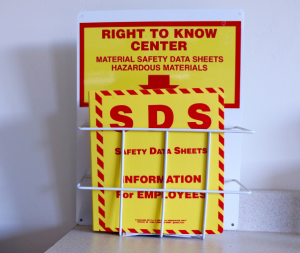Richard Denison, Ph.D., is a Lead Senior Scientist.
Isocyanates are nasty chemicals, including when they are left over as residuals after manufacturing other chemicals. Here are the kinds of risks they pose, according to the National Institute for Occupational Safety and Health (NIOSH):
Isocyanates are powerful irritants to the mucous membranes of the eyes and gastrointestinal and respiratory tracts. Direct skin contact can also cause marked inflammation. Isocyanates can also sensitize workers, making them subject to severe asthma attacks if they are exposed again. There is evidence that both respiratory and dermal exposures can lead to sensitization. Death from severe asthma in some sensitized subjects has been reported.
In prior reviews of new chemicals under the Toxic Substances Control Act, EPA has repeatedly indicated that “[i]socyanate exposure has been identified as the leading attributable cause of work-related asthma, and prevalence in the exposed workforce has been estimated at 1-20 percent.”
Both NIOSH and EPA have raised even greater concern over activities involving spray application of chemicals containing isocyanates. In 2006, NIOSH issued a rare alert calling for workers to undergo medical surveillance and wear high-efficiency respirators and gloves when engaged in such activities.
Even in the recent past, when reviewing new chemicals containing isocyanate residuals, EPA has typically (1) issued a consent order subjecting the company submitting the chemical for review to multiple conditions in order to limit workplace inhalation exposures to the residuals, and (2) followed up with a Significant New Use Rule (SNUR) that extends those conditions to other companies, requiring them to notify EPA prior to engaging in any activity that exceeds those workplace limits. And the only case since TSCA was amended in 2016 where EPA found a new chemical “presents an unreasonable risk” – as opposed to the more common, lower-bar finding that it “may present an unreasonable risk” – involved residual isocyanates present after manufacture of two new chemicals.
In such cases EPA has imposed some combination of three types of conditions on manufacture of such chemicals: prohibitions on activities that could generate inhalable forms of the chemical and result in inhalation exposures; strict requirements for the use of high-efficiency respirators and gloves; and a strict limit on the amount of isocyanate residuals allowed to be present in the new chemical, typically in the range of 0.1% to 0.2%.
So it is quite disturbing to see how EPA has dealt with the most recent such new chemical for which EPA has issued its final decision – which requires that companies employ NONE of these protections. Read More

